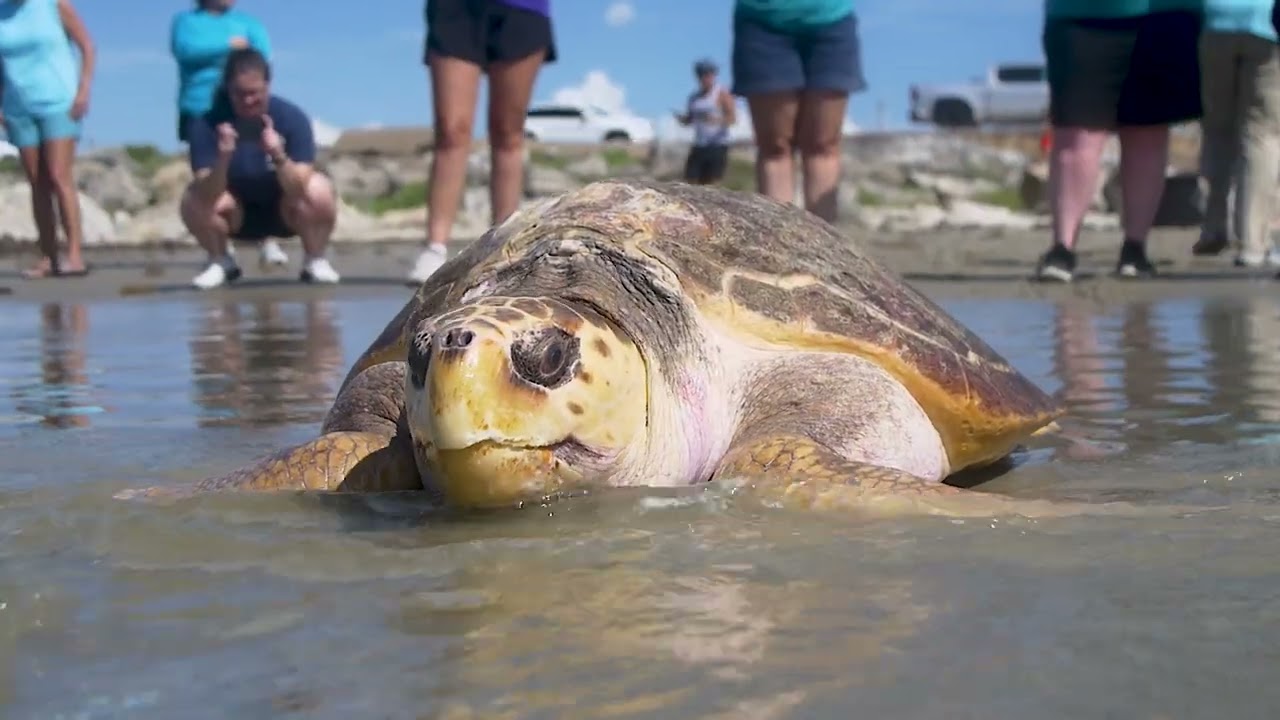- Overview of the Audubon Aquarium Rescue program and its significance in sea turtle conservation
- The biology and ecology of sea turtles, including common species found in the Gulf of Mexico
- Insights into the rescue, rehabilitation, and release process for injured sea turtles
- Community involvement and educational outreach associated with the sea turtle release
- Future challenges and conservation efforts critical to sea turtle populations
The Audubon Aquarium Rescue program operates as a vital component in the ongoing effort to protect and rehabilitate sea turtles along the Gulf Coast. Each year, the program rescues numerous sea turtles that have suffered injuries due to various factors, including boat strikes, fishing gear entanglement, and habitat degradation. The 2025 Rescue Sea Turtle Release event represents a significant milestone for both the organization and the local community, highlighting the importance of wildlife conservation, education, and public awareness.
Sea turtles are ancient mariners that have inhabited the oceans for millions of years. They play essential roles in marine ecosystems, including maintaining healthy seagrass beds and coral reefs. In the Gulf of Mexico, several species, including the loggerhead, green, and Kemp’s ridley turtles, form the foundation of a complex ecological network. Loggerheads are known for their powerful jaws that enable them to consume hard-shelled prey, while green turtles predominantly graze on seagrasses, promoting growth and biodiversity in these underwater habitats. Understanding the biology and ecology of these sea turtles is crucial for effective conservation strategies.
The rescue process begins when the Audubon Aquarium receives calls about stranded or injured sea turtles. Each turtle undergoes a thorough medical examination. The veterinary team assesses the extent of injuries or illnesses, administering care ranging from wound treatments to surgeries. Rehabilitation can last for weeks or even months, depending on the severity of the turtle’s condition. The aquarium prioritizes stress reduction during this period, carefully monitoring their environment and health. This approach ensures that sea turtles receive optimal care, allowing them to regain strength before their eventual release back into the wild.
Community involvement plays a pivotal role in the success of the Audubon Aquarium Rescue program. Events surrounding the release day invite local students, conservationists, and enthusiastic citizens to participate. Attendees often engage in educational workshops, where experts share information about sea turtle biology, threats, and conservation techniques. Witnessing a released turtle can evoke powerful emotions, fostering a deeper connection between community members and marine life. This engagement not only educates but also instills a sense of responsibility toward ocean stewardship. By promoting awareness, the program advocates for sustainable practices that directly benefit marine ecosystems.
In the face of climate change, habitat loss, and pollution, sea turtles encounter mounting challenges. Rising sea levels and oceanic temperature fluctuations threaten nesting sites and hatchling success rates. Additionally, ocean plastic poses a significant threat, often ingested by turtles mistaking it for food. This growing crisis requires a proactive approach to conservation. Initiatives like beach clean-ups and advocacy for sustainable fishing practices are vital. By addressing these issues, conservationists strive to enhance the chances of survival for these remarkable reptiles.
The 2025 sea turtle release signifies not just the culmination of the rehabilitation journey, but a broader mission. It serves as a reminder of the collective effort needed to protect species facing existential threats. With each turtle returned to the ocean, there lies hope for a healthier marine environment. The success of these efforts relies on collaboration between organizations, governments, and the public. Through education, advocacy, and participation, individuals can actively contribute to the preservation of these ancient creatures and the ecosystems they inhabit.
The importance of such events goes beyond the immediate act of releasing turtles. They serve as emotional touchpoints that resonate with attendees, fostering lasting memories. These experiences can catalyze lifelong advocates for marine life. The narrative surrounding each turtle—its rescue, rehabilitation, and release—can encourage individuals to think critically about human impacts on marine ecosystems.
With the backdrop of the Gulf Coast known for its biodiversity, the Audubon Aquarium Rescue also highlights the necessity for continued research and monitoring. Ongoing studies into turtle population dynamics can help track the efficacy of rehabilitation programs. Understanding migratory patterns and nesting behaviors provides insights for developing conservation guidelines. These actions are essential as they can improve management practices and influence policy changes geared towards environmental protection.
The complexities surrounding sea turtle conservation require multifaceted approaches. Support from policies focusing on coastal protection can bolster restoration efforts. This includes advocating for the creation and enforcement of marine protected areas, reducing fishing bycatch, and enhancing public access to clean waterways. Every level of society has a role to play, from students learning about turtle life cycles to policymakers drafting legislation aimed at habitat preservation.
Furthermore, technology emerges as a powerful tool in monitoring turtle populations. GPS tracking allows researchers to gather data on migration routes and behavior, informing conservation efforts. The use of drone surveillance can also enhance nesting site protection, ensuring human activities do not encroach on critical habitats. These technological advancements equip conservationists with the needed insights to effectively address threats facing sea turtles.
As individuals engage with the Audubon Aquarium Rescue program, they participate in a larger dialogue about marine conservation. The act of attending the release event can inspire participants to educate others about the significance of sea turtles. It fosters community solidarity, driving collective action. Advocating for sustainable lifestyle choices—including reducing plastic usage and supporting local conservation initiatives—becomes a shared responsibility.
Financial support is another cornerstone of sustained conservation efforts. Donations and volunteer work contribute significantly to the Audubon Aquarium’s capabilities. Every dollar goes toward medical care, food, and educational outreach. By investing in these efforts, individuals can have a direct impact on the well-being of injured sea turtles and ensure that the resources exist for future rescues.
The collaboration between the aquarium, local schools, and environmental organizations emphasizes the essence of community involvement in conservation. Educational programs tailored for children foster respect and appreciation for all marine life. Providing hands-on experiences during field trips connects students to their environment, encouraging thoughtful stewardship from an early age. Educational outreach extends beyond the classroom, offering workshops for families that reinforce the importance of ecological awareness.
As the 2025 Rescue Sea Turtle Release approaches, anticipation builds among those involved. Each turtle’s release represents hope for the future. It reflects the hard work of countless individuals dedicated to the conservation of these majestic animals. The gathering of community members fosters discussion, highlighting the unique challenges sea turtles face in an ever-changing environment.
In essence, the Audubon Aquarium Rescue Sea Turtle Release 2025 is not just the release of sea turtles; it exemplifies a collective commitment to marine conservation. Every effort taken inspires others to think critically about their role in preserving marine ecosystems. By understanding the biology, threats, and rehabilitation processes associated with sea turtles, individuals become empowered advocates for change. As communities unite in this endeavor, there is a shared vision of a thriving marine landscape that supports both wildlife and humanity.
*****
Source Description
Three sea turtles are back in the Gulf after undergoing extensive care with Audubon Aquarium Rescue. On June 24, 2025, Audubon team members released two critically endangered Kemp’s ridley sea turtles and one large loggerhead sea turtle, Francois, into the waters off Galveston, Texas.


